Learn the history and all the details of the Parthenon in Athens, one of the most important monuments of ancient Greece. Below, we detail the difference between the Acropolis and the Parthenon and share some tips to make your visit unforgettable!
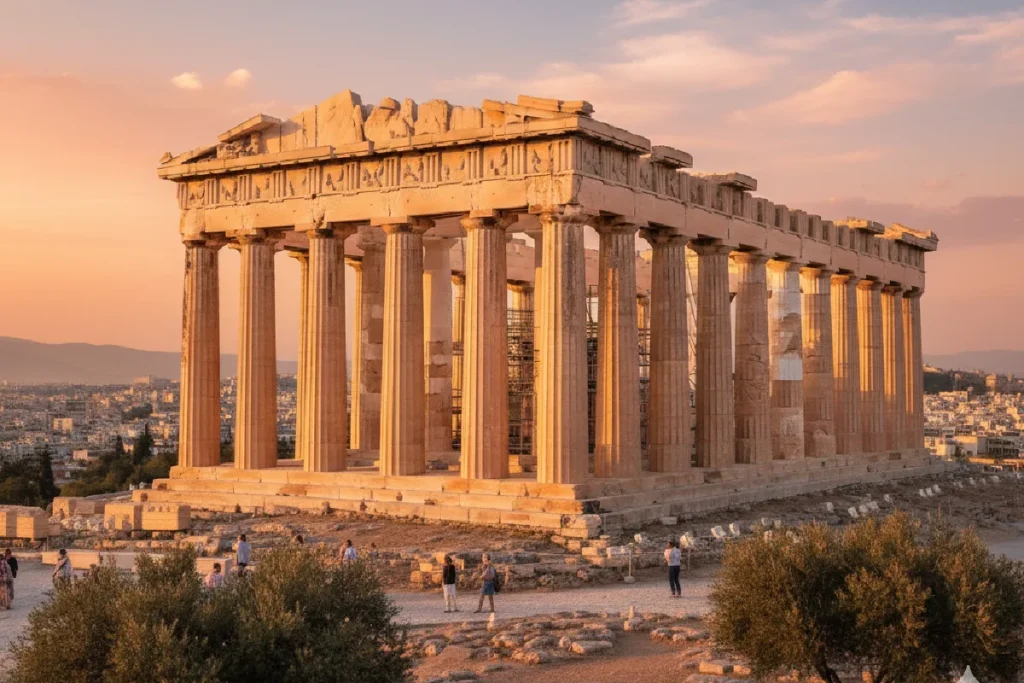
This is one of the most common questions when traveling to the Greek capital. The difference between the Acropolis and the Parthenon is crucial to understanding the entire monumental complex.
Think of the Acropolis not just as a place, but as the High City (its literal meaning). It consists of a fortified rocky hill that rises spectacularly above the city of Athens. Historically, it was the religious and defensive center of the ancient polis, and it is not a building, but a complex.
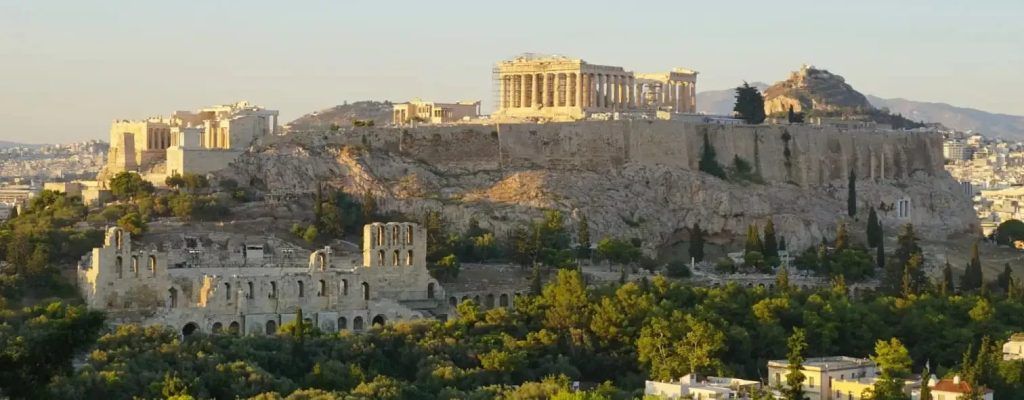
The Acropolis, therefore, is the sacred site and the plateau where several notable temples and structures stand. When you climb the Acropolis, you are not only visiting the Parthenon, but an architectural ensemble that includes other must-sees, such as the Propylaea (the monumental gateway), the Erechtheion (a temple dedicated to Poseidon and Athena, famous for its Caryatids), and the Temple of Athena Nike. It is, therefore, the entire hill with all its monuments.
So, where does the Parthenon fit into all this? It is the largest, central, and most famous temple within that Acropolis. It was built, as we will elaborate on in the following lines, in honor of the goddess Athena, and it is the quintessential symbol of classical Greek architecture and Athenian democracy.

In short, the Acropolis is the site, the sacred enclosure on top of the hill, and the Parthenon is the magnificent temple located inside it.
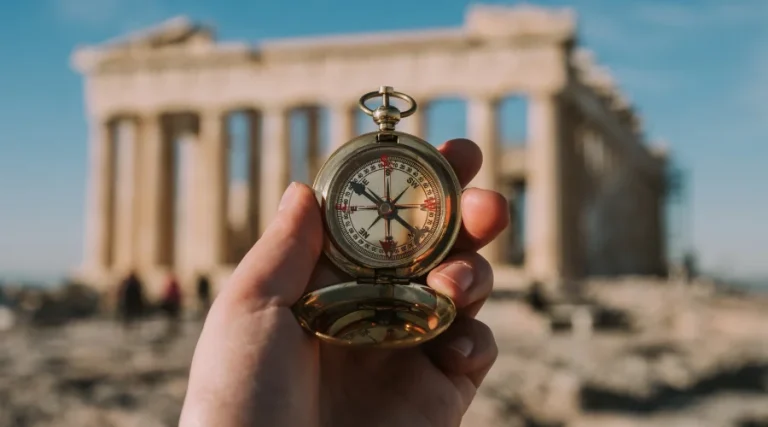
Since the Parthenon is the main structure located at the top of the Acropolis, the visiting hours are the same as those of the entire site. The Acropolis opens at 8:00 AM, with the closing time varying by season: in summer (April to October), it usually closes at 8:00 PM, while in winter (November to March) the closing time is earlier, at 5:00 PM.
It is important to remember that access is stopped half an hour before the closing time. Therefore, our recommendation is to always check the specific schedule on the official website before your visit, as there may be changes due to holidays or weather conditions.
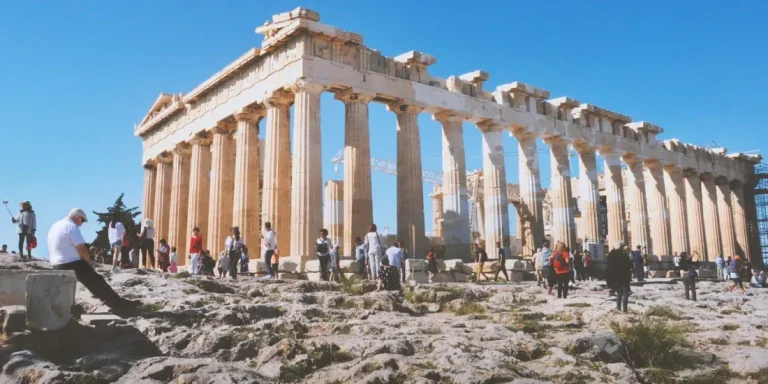
The Parthenon is located on top of the Acropolis hill, in the city of Athens, Greece. Its location is unmistakable and dominates the capital’s skyline. The hill is in the historic center, so getting there is easy, either on foot from the Plaka or Monastiraki neighborhoods, or at the Acropolis metro station.
As for where the Parthenon was located, the answer is simple: it has always been in the same place. What has changed over the centuries is its use and its state of conservation, but its original location, where it was built in the 5th century BC, is the same one you will visit.
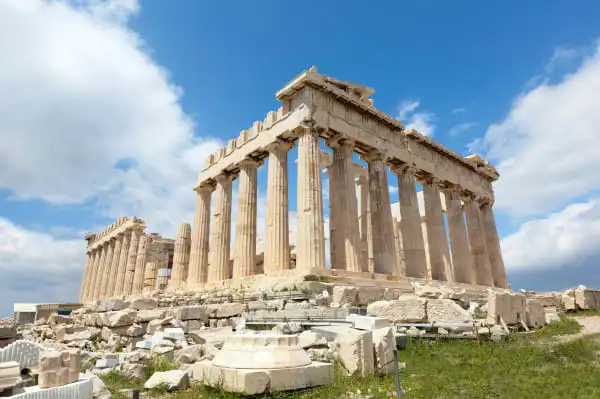
The ideal months to visit the Parthenon are April-May and September-October, as temperatures during this time are usually pleasant (19-26 ºC) and crowd levels are reasonable. For this reason, summer (June-August) is not the best time to visit, as typical temperatures are 32-33 ºC, although there can be days exceeding 40 ºC.
As for the best time of day to visit the Acropolis and, by extension, the Parthenon, it is right when it opens: at 8:00 AM. This way, you will avoid the crowds that arrive later with organized tours and you will beat the high temperatures.
The Acropolis, being a rocky hill with uneven terrain and ancient stairs, is not easy to navigate. However, measures have been implemented to improve accessibility, especially for people with reduced mobility.
On the northwest side of the hill, there is an elevator that is specifically designed for wheelchair visitors, people with walking difficulties, and parents with baby strollers (although its main use is for people with disabilities or the elderly).
However, you should keep in mind that, although the elevator facilitates the ascent to the plateau, once you are up there, the terrain around the Parthenon is still uneven, with ancient stones and, at times, slippery surfaces, which can make circulation a bit complicated. Despite this, the areas surrounding the Parthenon and other main temples are, for the most part, covered by compacted dirt paths or walkways that make access easier.
Our recommendation for the elderly or those with reduced mobility is to wear comfortable, non-slip footwear, and if you need the elevator, contact the site staff in advance to ensure its availability and proper functioning.
The Parthenon is a building that encapsulates the glory and tragedy of Greek civilization. The history of the Acropolis and the Parthenon began long before its construction, which is why, to understand its magnitude, we have to travel to the Golden Age of Athens:
The Parthenon we see today was not the first temple dedicated to Athena on this site. The Acropolis hill, and the previous temple known as the Pre-Parthenon, were devastated by the Persians during the Persian Wars in 480 BC. Following the Greek victory and the establishment of the Delian League, Athens, under the leadership of Pericles, decided to rebuild and beautify the Acropolis as a testament to its power and faith. The plan for the new Parthenon was conceived in this period of splendor. This is where the Parthenon was built, over the foundations of that destroyed temple.


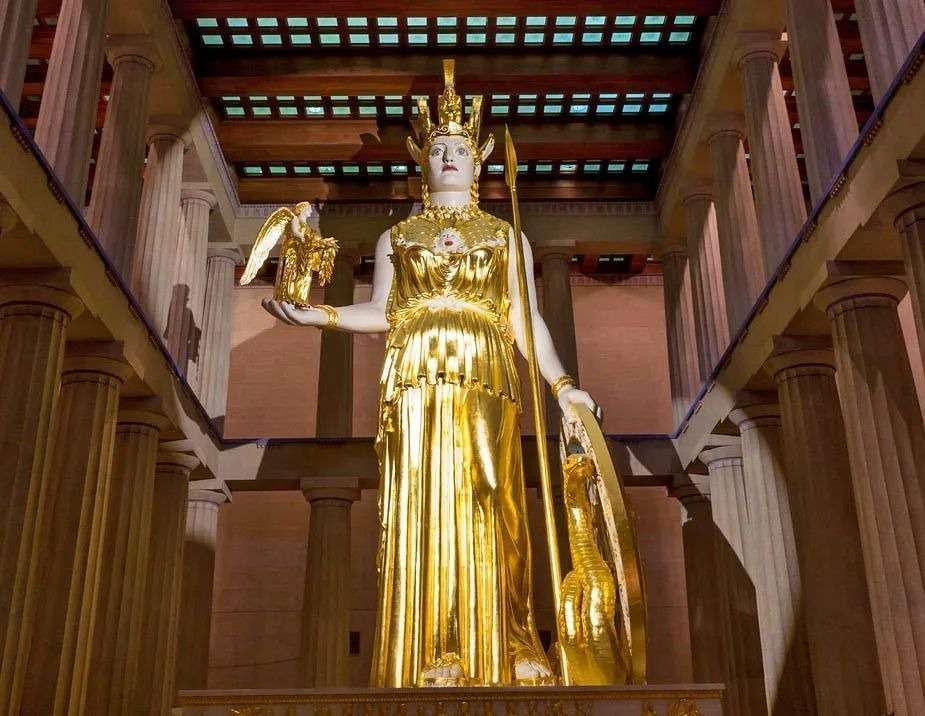
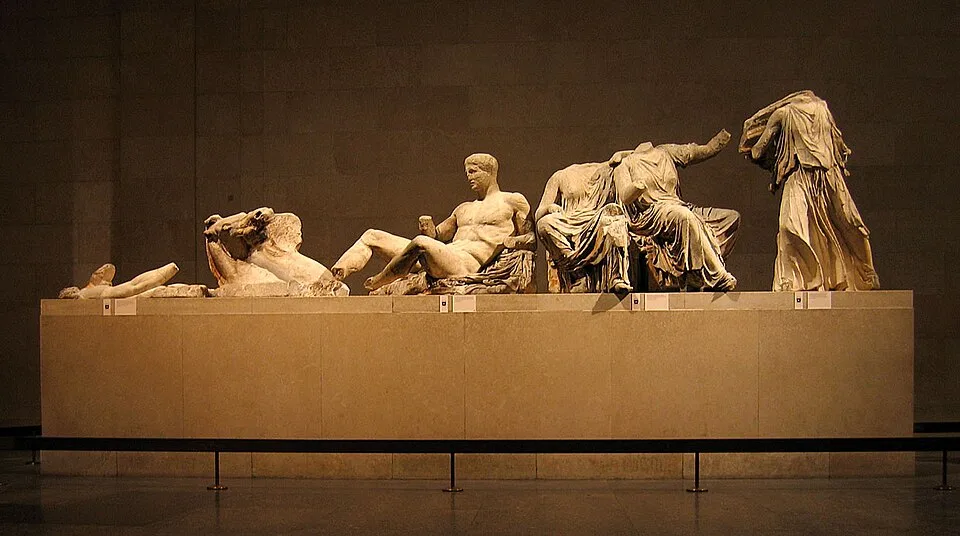
The construction of the Parthenon began in 447 BC and was completed in 438 BC, although the sculptural decoration continued until 432 BC. It was the most sublime form of Greek art and architecture.
And who built it? The design and supervision were carried out by the architects Ictinus and Callicrates, while the sculptor Phidias was responsible for the artistic direction and the creation of the impressive sculptures.
This is a question that is often confused, but the answer is clear: the Parthenon was dedicated to the goddess Athena, specifically to the invocation of Athena Parthenos, the protector of the city, hence its name, which means “the chamber of the Maiden.” Therefore, the goddess also known as the goddess of wisdom, strategic warfare, and crafts was the one to whom the Parthenon was dedicated.
Throughout the centuries, the Parthenon, as a building, has seen many changes in use. After Antiquity, around the 6th century AD, it was transformed into a Christian church dedicated to the Virgin Mary. Later, after the Ottoman conquest in 1458, it became a mosque, and even in 1687, during the Venetian siege, it was used as a gunpowder magazine (to store gunpowder).
It was precisely its use as a gunpowder magazine that led to its greatest devastation. During a Venetian siege in 1687, a projectile struck the temple, causing a catastrophic explosion that left much of it in ruins.
Subsequently, at the beginning of the 19th century, Thomas Bruce, 7th Earl of Elgin and British ambassador to the Ottoman Empire, removed and transferred a significant part of the Parthenon’s sculptures to Great Britain, including sections of the frieze, several metopes, and some pieces of the pediments. These sculptures, known as the Elgin Marbles or Parthenon Marbles, are now housed in the British Museum in London and are the subject of constant international debate regarding their possible repatriation to Greece. Therefore, if you wonder where the remains of the Parthenon (its sculptures) are located, the answer is divided between the Acropolis Museum in Athens and the British Museum.

The Parthenon is an outstanding example of classical Greek architecture, designed in the Doric order. It has a rectangular floor plan with eight columns on the short sides and seventeen columns on the long sides, supporting the entablature and pediments. The Parthenon is renowned for its symmetry, proportion, and precise measurements, achieved through the use of mathematical principles and optical illusions. The temple’s decoration features sculptural relief panels, which depict scenes from Greek mythology, and the famous frieze that encircles the inner chamber, depicting the Panathenaic procession. The Parthenon’s architectural perfection and beauty have inspired countless buildings throughout history and remain a testament to the ingenuity and skill of ancient Greek architects.
It is a Doric style temple and is characterized by its robust Doric columns, which rest directly on the stylobate (the upper platform). However, incredible sophistication is hidden beneath this simplicity.
One of the most fascinating details is the curvature of the Parthenon’s stylobate. If you look closely, the floor of the temple is not flat but curves slightly upwards in the center. This elevation, of less than 10 cm, prevents the long building from appearing to sag, an optical effect common in long, horizontal structures. Similarly, the columns have a slight bulge in the center, known as entasis, which makes them appear completely straight and robust from a distance.
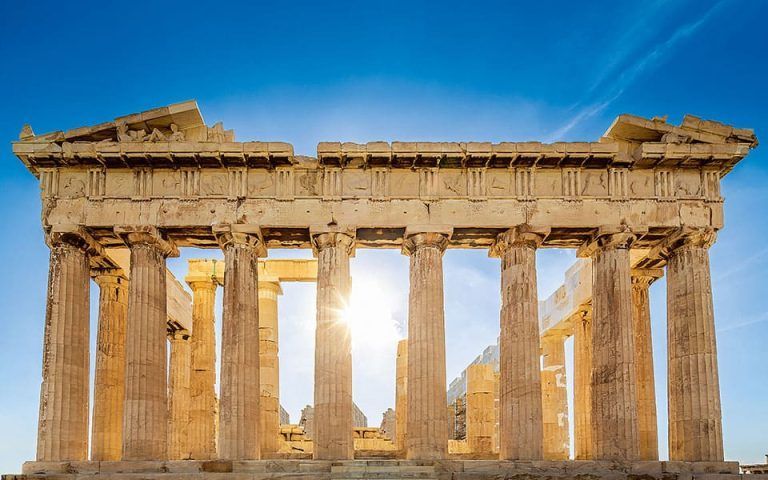
Another incredible adjustment is that of the corner columns. They are slightly thicker and closer together than the others. The reason? Being in the open air, the light tends to make the edge columns look thinner than they really are. By thickening them, this illusion is compensated for, guaranteeing the visual uniformity of the whole.
An important detail to consider during your visit is that you will probably see scaffolding on the Parthenon. This is because the temple is in a constant process of restoration and conservation. Its constant exposure to the elements, pollution, and historical damage mean that the Parthenon requires perpetual maintenance.
Although restoration is a slow and meticulous process that has lasted decades, the goal is to preserve the temple for future generations. It is expected that, gradually, the scaffolding will be removed from significant parts, which is why it is rumored that they might be removed from important areas in 2026.
No, you cannot see the Parthenon for free. As we mentioned, the Parthenon is located within the Acropolis site, and an admission ticket is required to access the archaeological site.
The Parthenon in Greece is not far from the Acropolis, in fact, it is inside the Acropolis. It is the main temple located on top of the hill. Therefore, as soon as you have climbed the hill and passed the Propylaea, you will find it directly in front of you.
No, the Acropolis site, where the Parthenon is located, closes in the late afternoon, so it is not possible to visit it at night. However, you will be able to see it illuminated from the city. An impressive spectacle you shouldn’t miss!
Very close to the Parthenon, within the Acropolis, you will find other essential monuments such as the Erechtheion Temple, with its famous Caryatids, the Propylaea (the monumental gateway), and the Temple of Athena Nike. Just at the foot of the hill are the Theater of Dionysus and the Odeon of Herodes Atticus.
The Elgin Marbles (or Parthenon Marbles) are not on the Parthenon because they were removed by Lord Elgin at the beginning of the 19th century and are currently exhibited in the British Museum in London. Greece maintains a constant request for their return.
The Parthenon was originally used as a temple to house the monumental statue of the goddess Athena Parthenos. Subsequently, over the centuries, it was converted into a Christian church, a mosque, and, unfortunately, a gunpowder magazine.
The Acropolis ticket grants visitors access to the archaeological site of the Acropolis and its slopes, including the Parthenon, the Theater…
The Theater of Dionysus is one of the most important archaeological sites in Athens, Greece…
The Odeon of Herodes Atticus is a beautifully preserved Roman-era amphitheater located…
